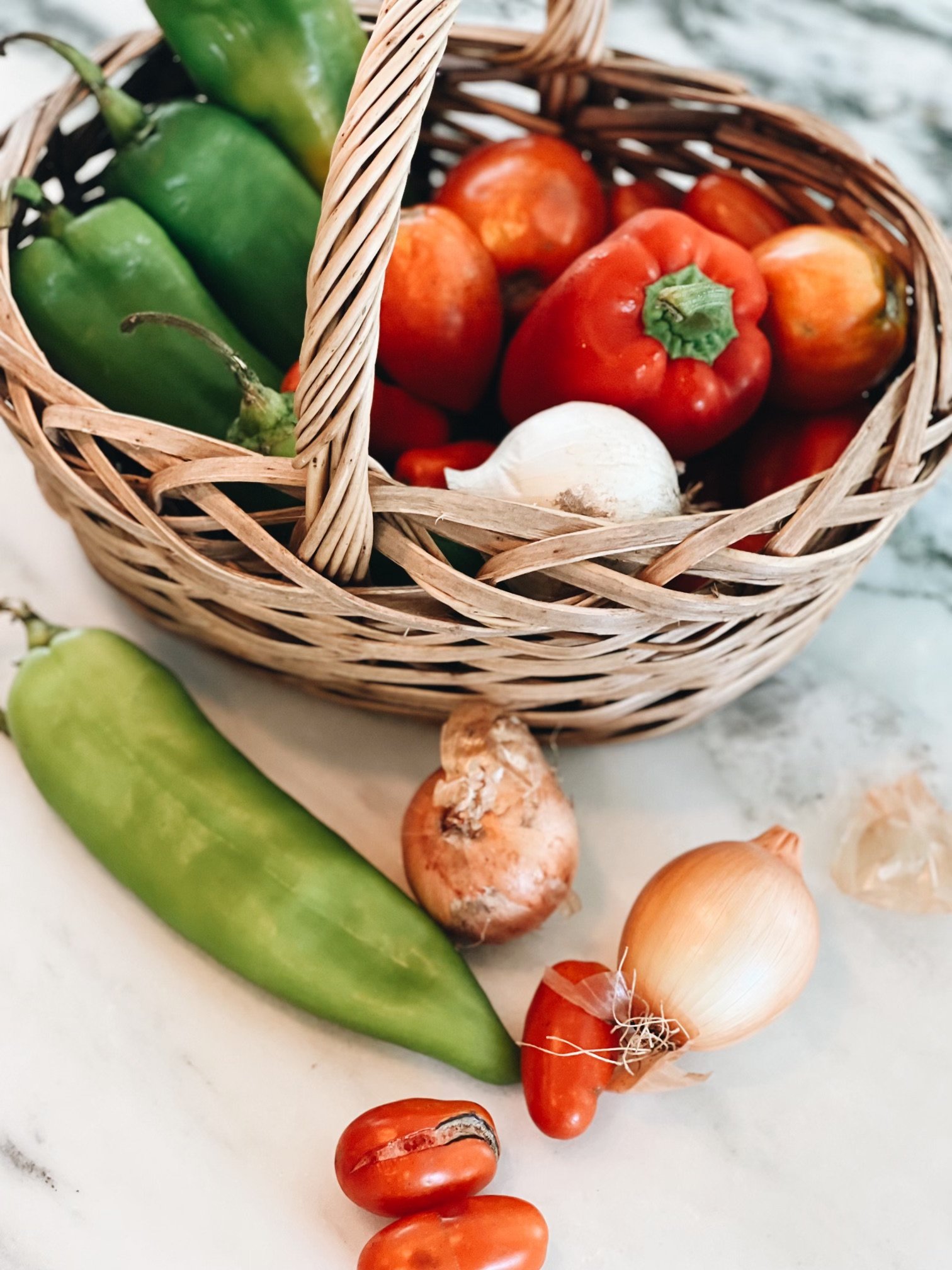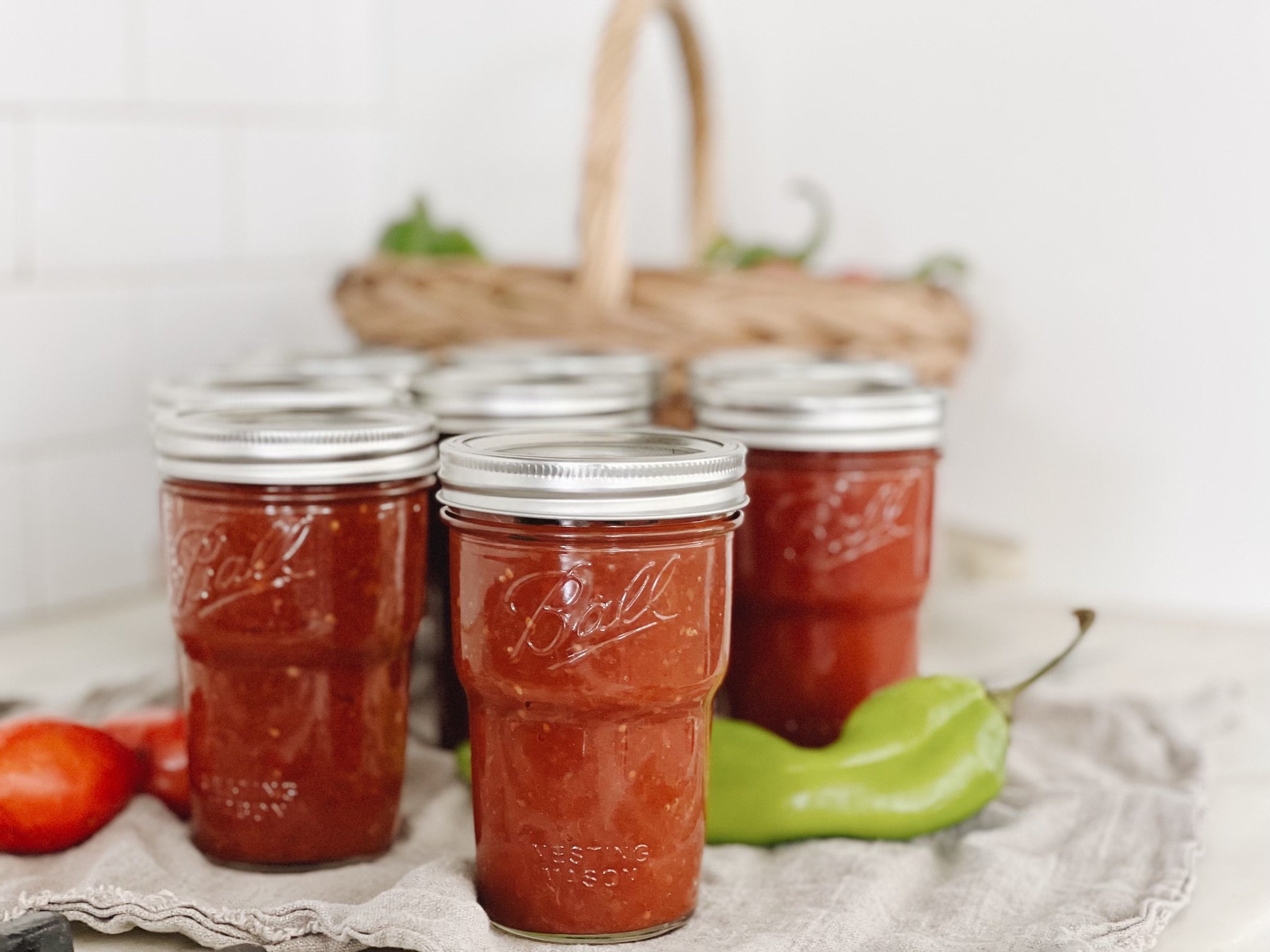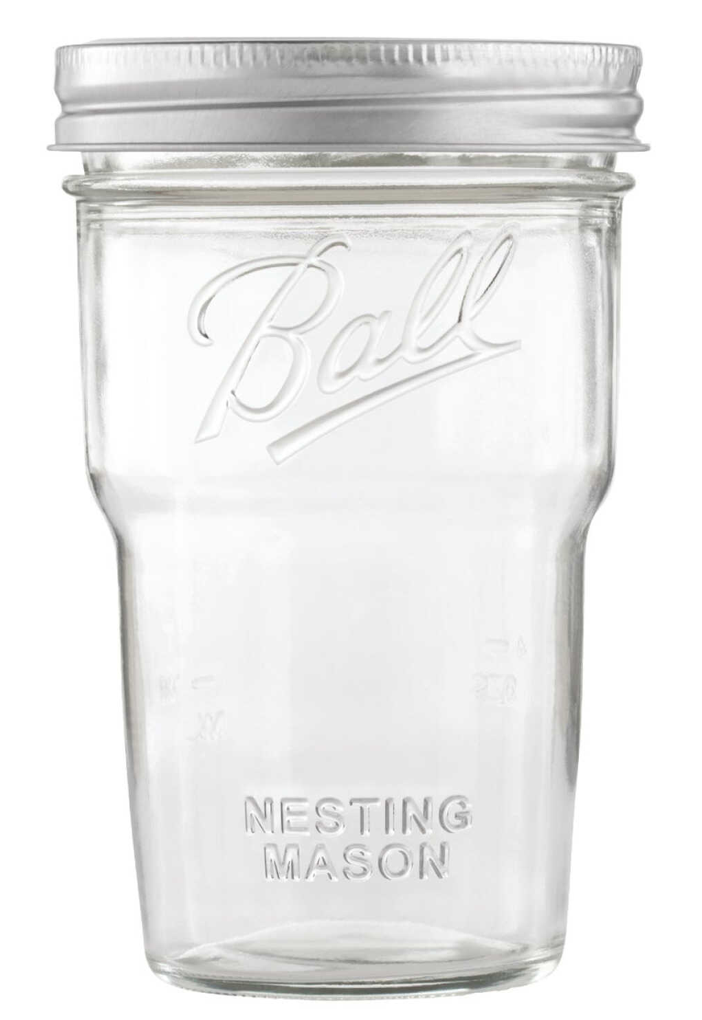A Tasty Chili Canning Sauce Using The Last Of Summer's Harvest
Although it may be a while till autumn days hit us, my summer vegetables like tomatoes, peppers, cucumbers, chilis, and summer herbs are starting to dwindle.
I know winter is peeking in the distance, and I won't be able to enjoy these fresh vegetables anymore. But I also know canning these veggies will allow me to enjoy them until next summer and even longer!
What I love about canning is the ability to throw a lot of fresh stuff together, and you are almost guaranteed to have a tasty end product. Note the almost!
It will last you a long time if you store it correctly, and whenever you crave the taste of sweet tomatoes or salty cucumbers, your canned goods are ready to be enjoyed.
Below is one of my favorite chili sauce recipes to make using the last of our summer harvest. It goes delicious with hot dogs, burgers, wraps, tacos, corn chips, and much more!
This post is sponsored by the makers of Ball® home canning products
Summer Harvest Chili Sauce Recipe
one of my favorite chili sauce recipes from the makers of Ball® home canning products. With fresh Anaheim chilis and chili powder tamed by the sweetness of brown sugar, you've got a real winner on your hands.
Preserving Method: Water Bath Canning
Makes about 8 (16 oz.) jars
For this recipe, I used the Ball® Nesting Jars! They are wonderful for any recipe requiring a 16oz jar and when not in use they stack inside each other to free up storage space! We could all use more storage, right?
READ MORE: Don't know how to can foods? Here is a step-by-step guide on how to can foods in 10 easy steps.
INGREDIENTS
9 lbs. tomatoes, peeled and roughly chopped (about 4 quarts) See this BLOG for thoughts on how I peel my tomatoes.
6 onions, chopped
3 red bell peppers, seeded and chopped
6 Thai red or Anaheim chilis, seeded and chopped ( I used Anaheim for this recipe)
6 garlic cloves
2 cups apple cider vinegar
1 cup light brown sugar
1 Tbsp. salt
1 Tbsp. mustard seed
1 Tbsp. grated horseradish (optional)
2 Tbsp. chili powder
2 tsp. allspice
DIRECTIONS
1. Place tomatoes, onions, red peppers, chilies, and garlic in the bowl of a food processor, working in batches, pulse until evenly chopped but still chunky, or until smooth if you prefer.
2. Combine all ingredients in a large stainless steel pot and bring to a boil over high heat, stirring frequently. Lower heat and simmer until thickened, about 1 ½- 2 hours, occasionally stirring to prevent scorching. The sauce is done when it's thick enough to hold shape on a spoon.
3. Prepare boiling water canner while chili sauce is cooking. Heat jars in simmering water until ready to use, do not boil. Wash lids in warm soapy water and set aside with bands.
4. Ladle hot chili sauce into a hot jar leaving a ½-inch headspace. Remove air bubbles. Wipe jar rim. Center lid on the jar and apply band, adjust to fingertip tight. Place jar in boiling water canner. Repeat until all jars are filled.
5. Process jars 20 minutes, adjusting for altitude. Turn off the heat, remove the lid, and let the jars stand 5 minutes. Remove jars and let them cool for 12-24 hours. Check if the lids are properly sealed - they should not flex when the center is pressed.
A Few Interesting Facts About Canning
Water bath canning is used for high acidic foods with a ph of 4.6 or lower. This includes most fruit except bananas, pickles, melon, papaya, and watermelon. Tomatoes have pH levels of between 4.2 to 4.9, so tomatoes can also be canned this way by adding an acidic solution like vinegar.
Pressure canning is used for low acidic foods with a pH of more than 4.6. These foods must be pressure cooked at high temps for long periods. This will ensure the risk of all foodborne illnesses is eliminated.
Canned goods are just as nutritious as fresh food. The canning process will not alter the minerals, fat-soluble vitamins, protein, fat, and carbohydrates.
Pasta, rice, and noodles should not be added to canned products as the starch interferes with heat transfer to the center of the jar.
Do not use dairy in canned products as they can harbor harmful botulism bacteria and cannot be stored at room temperature.
READ MORE: Waterbath Canning explained and all the essentials you need to know about canning.
PIN FOR LATER
SHOP THIS POST
I hope you enjoy this recipe and learning more about canning.
Here are a few of my other summer canning favorites:
Dill Pickles - A Favorite Summer Recipe
Basil Garlic Tomato Sauce - Great For Beginners
A Delicious Barbecue Sauce Perfect for Summer gatherings
Low-Sugar Peach Jam - Sweet Without The Guilt
Love, Annette
Disclosure: This is a sponsored post that is part of an ongoing partnership with the Fresh Preserving Division of Newell Brands. They have provided jars, equipment and monetary compensation. All thoughts and opinions expressed are my own.











